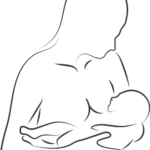Image credit to greatsmileforu.com
Soft Spots These “soft spots” on your baby’s head are the gaps between their five major skull bones. The spaces exist because the skull of a newborn is not yet closed, and that helps the baby move through the pelvis in the process of vaginal birth. The fontanelles feel soft to the touch.
Babies are born with six fontanelles that gradually close during the first year or so. The largest, located between the forehead and the crown of the head, is called the anterior fontanelle. It’s crucial to note that this fontanelle may indicate some vital information concerning your baby’s health.
But what exactly are the soft spots on a baby’s head?
A fontanelle is simply an opening in your baby’s skull where the bones have not yet come together. While they may appear as if these areas are the underdeveloped portions of your baby’s head, fontanelles are a normal part of baby development. They serve two very important functions for your child: facilitating birth and ensuring rapid growth.
The important thing to keep in mind regarding these two roles is the following:
Birth: By allowing room for the bones of the skull to move during delivery, the fontanelles allow your baby’s head to fit through the narrow birth canal without damaging the brain.
Growth: A baby’s head grows more at the beginning of the first two years of its life than it does at any other time, and in fact, the spaces between the skull bones provide the room needed for rapid brain growth during this period.
Types of Fontanelles
Most people know about the large soft spot on top of a baby’s head, but it is not the only one. A newborn has six fontanelles:
Anterior fontanelle: This is the diamond-shaped fontanelle on top of the head. Most people consider this “the soft spot”. It measures 1 to 3 centimeters at birth. It may be larger or even smaller as well.
Posterior fontanelle: This is a small opening at the back of the baby’s skull, which is triangular in shape. At birth, it is normally less than 1/2 centimeter.
Mastoid fontanelles: This type of fontanelle is a paired structure, meaning there are two. These are located at the intersection of temporal, parietal, and occipital bones, found toward the back of the head.
Sphenoid fontanelles: Similar to mastoid fontanelles, this type of fontanelle is also paired, and located on either side of the skull.
When Do Fontanelles Close?
Skull bones do not grow completely closed during childhood because the brain is still growing. The fontanelles are considered closed when the bones grow to the point they fill up the open spaces.
A baby’s fontanelles close in the following sequence or order:
Posterior: Within 1-2 months
Anterior: Within 13-24 months
Mastoid: Within 6-18 months
Sphenoid: At about 6 months after birth
Above is a list of average times of closure for the fontanelles. A fontanelle can close earlier or later and still be “normal” and healthy.
How To Care for Your Baby’s Fontanelles
While caring for your baby’s fontanelles isn’t complicated, the soft spots make many new parents nervous. Be assured that a health care provider will check your baby’s fontanelles at birth and again during their first visit to the pediatrician.
This monitoring will continue when your baby sees a doctor, midwife, or nurse during well-baby visits, and you can also check on your baby’s soft spot at home. While there is nothing special you’re supposed to do in terms of caring for your baby’s fontanelles, knowing what to look for can help you feel more confident in caring for your new baby.
• Some of the things to know are as follows:
The fontanelles should look flat against your baby’s head; they shouldn’t look swollen and bulging or sunken down into your child’s skull.
When you gently run your fingers over the top of your child’s head, the spot should feel soft and flat with a slight inward curve.
Although the soft spot is a space between the skull bones, a tough membrane over the opening protects the soft tissue and the brain inside. You don’t have to be worried about everyday contact, such as:
Touching your baby’s head, even on their soft spot
Washing their hair and scalp
Using a baby brush or comb on their hair
Putting on a cute hat or headband ***
Let your other children hold and touch the baby, but always supervise.
Sunken Fontanelles and Other Concerns
Your baby’s fontanelles can also provide some pointers about your child’s health. Here is what some of those changes in their fontanelles could mean.
Sunken fontanelles
The fontanelle is supposed to curve slightly inward. A fontanelle that sinks down into the top of your baby’s head, however, can be a sign of dehydration. This particularly happens if they are not drinking enough fluids or are losing more fluids than they are taking in.
Your baby can become dehydrated if they:
are having trouble with breastfeeding or bottle-feeding
have diarrhea, vomiting, or fever
spend too much time in a hot environment and become overheated
Other signs of dehydration include not producing enough urine, excessive sleepiness, irritability, dry mouth, and crying without tears.
Dehydration in newborns and young children is considered a medical emergency. If your child is showing signs of dehydration and/or you notice that their fontanelles are sunken, call your pediatrician right away.
Also Read : What to Do When Your Breastfed Baby Isn’t Pooping
Bulging fontanelles
As mentioned above it is normal for a baby’s fontanelle to be slightly raised when the baby is crying or vomiting. Both of these actions briefly increase the pressure inside the skull.
However, if the baby’s fontanelle continues to bulge when the baby stops crying, or it feels swollen and hard when the baby is resting, it could be a sign of a problem.
A bulging fontanelle may indicate too much fluid or swelling in the brain. These are both life-threatening complications that must be treated promptly in a medical environment. If you think your baby’s soft spot feels hard or seems to be bulging, it is time to call your pediatrician.
Enlarged fontanelles
An excessively large soft spot or one that does not close in a timely fashion can occasionally be a sign of some medical conditions, including hypothyroidism, Down syndrome, and rickets. The latter occurs due to a lack of vitamin D.
Your pediatrician will check your baby’s fontanelles at every visit from birth until they are closed. If you have concerns about the size or appearance of their soft spots, though, be sure to express those concerns.
Fontanelles that’s close too soon
It’s possible, but relatively rare, for fontanelles to close too early. Sometimes the soft spots can’t be felt easily and might even appear to be closed, but they’re still open.
gameObject.new description: It is possible, but relatively rare that a fontanelle may close too quickly. Sometimes the soft spots cannot be easily felt, and may even appear to be closed, though it really is still open.
Premature fusing of the skull bones is called craniosynostosis. Craniosynostosis can affect the brain’s growth and the shape of a baby’s head.
Another result of the skull bones fusing too soon can be pressure building up inside the baby’s skull. According to the Centers for Disease Control and Prevention, very mild cases of craniosynostosis may not require treatment, but in many cases, surgery is needed to relieve the pressure and allow the brain to grow normally.
How Fontanelles Affect a Baby’s Head Shape
The fontanelles contribute to the shape of a baby’s head. Since there is space for the shifting of the bones, any pressure on the skull within the first year of life can affect the way that it is shaped. Two of the most common problems with head shape in babies include molded head and flat head syndrome.
Molded head
Connected to this, the amount of time a baby’s head has to spend in the birth canal, combined with the pressure on the skull, can be the deciding factor in how a baby’s head looks immediately after birth.
In case you had a prolonged or challenging vaginal delivery, your baby’s head may appear cone-shaped or even pointy. This is caput succedaneum. Within a few days, though, it will grow into the more rounded shape you probably were expecting.
Flattening of the head
The shape of your baby’s head can change until the soft spots close and the bones of the skull fuse.
If your baby spends much of his time sleeping on his back, and awake in a car seat, the back of his head can become flattened. This is called positional plagiocephaly.
The “Safe to Sleep” campaign, previously known as the “Back to Sleep” campaign, suggests that babies sleep on their backs to reduce the risk of sudden infant death syndrome (SIDS).4 This, however, increases the risk for plagiocephaly.
Move your baby frequently during the day to prevent constant pressure on one spot of his or her head. Your child sleeps on their back, but the back of their head needs a break when they’re awake.
You can try some of these positions during the day while your baby is awake to take some pressure off the back of your child’s head:
Carry your baby upright in your arms
Try using an infant sling, wrap, or carrier Use tummy time Let them have things to look at that will turn their head side to side when they are on their back










